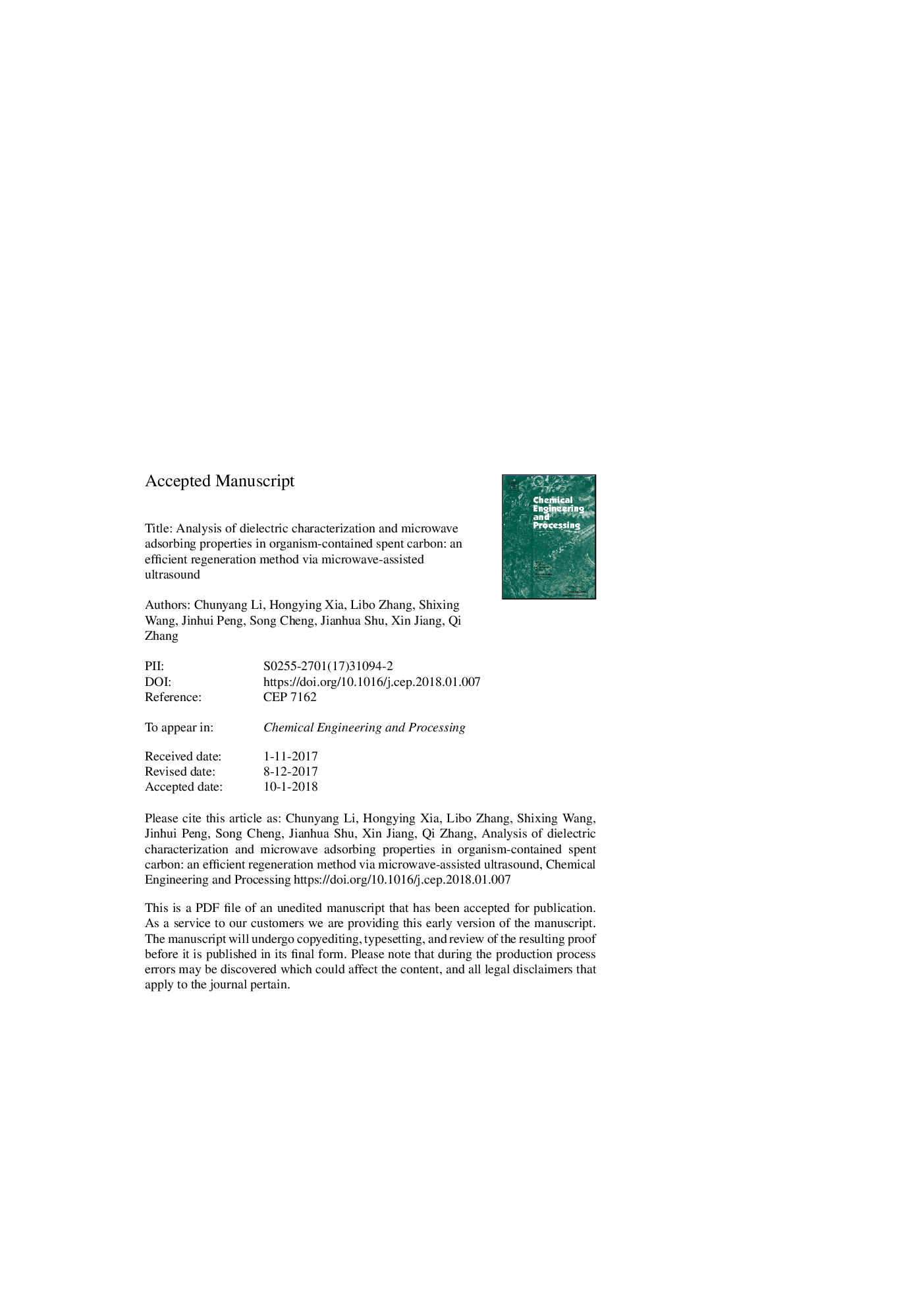| Article ID | Journal | Published Year | Pages | File Type |
|---|---|---|---|---|
| 7088848 | Chemical Engineering and Processing: Process Intensification | 2018 | 47 Pages |
Abstract
Increasing research has demonstrated that spent carbon within organisms could become a kind of renewable resource, and this paper aims to find an efficient method of regeneration to make such a resource. Organic compounds in spent carbon are detected using GC-MS, and ten types of organic impurities are detected. Based on changeable carbon structure, these functional groups of organic compounds combine with each other via molecular forces, covalent bonding and miscellaneous vacancy filling. SEM results show that the compounds adhere to carbon holes, losing adsorption capacity, causing the devitalization of spent carbon. Through the analysis of dielectric properties using cavity perturbation technique, microwave-adsorbing capacity of spent carbon is related to cavity perturbation frequency, temperature and molecular structure of the organic compounds. High-performance regeneration of spent carbon could be conducted under best frequency and temperature conditions with microwave-assisted. Ultrasound technique is the necessary regeneration step that provides energy to break bonds between the carbon structure and the organic compounds. Cavitation effects produce many bubbles because of different pressure. The bubbles grow and burst in ethanol solution during impregnation process, promoting the emulsification of organic compounds and ethanol solution in the spent carbon medium.
Related Topics
Physical Sciences and Engineering
Chemical Engineering
Process Chemistry and Technology
Authors
Chunyang Li, Hongying Xia, Libo Zhang, Shixing Wang, Jinhui Peng, Song Cheng, Jianhua Shu, Xin Jiang, Qi Zhang,
